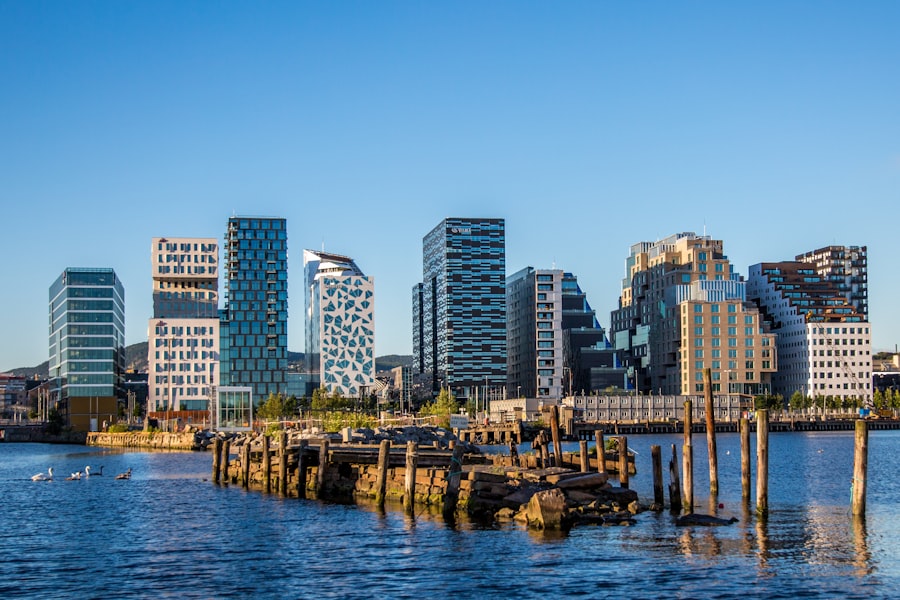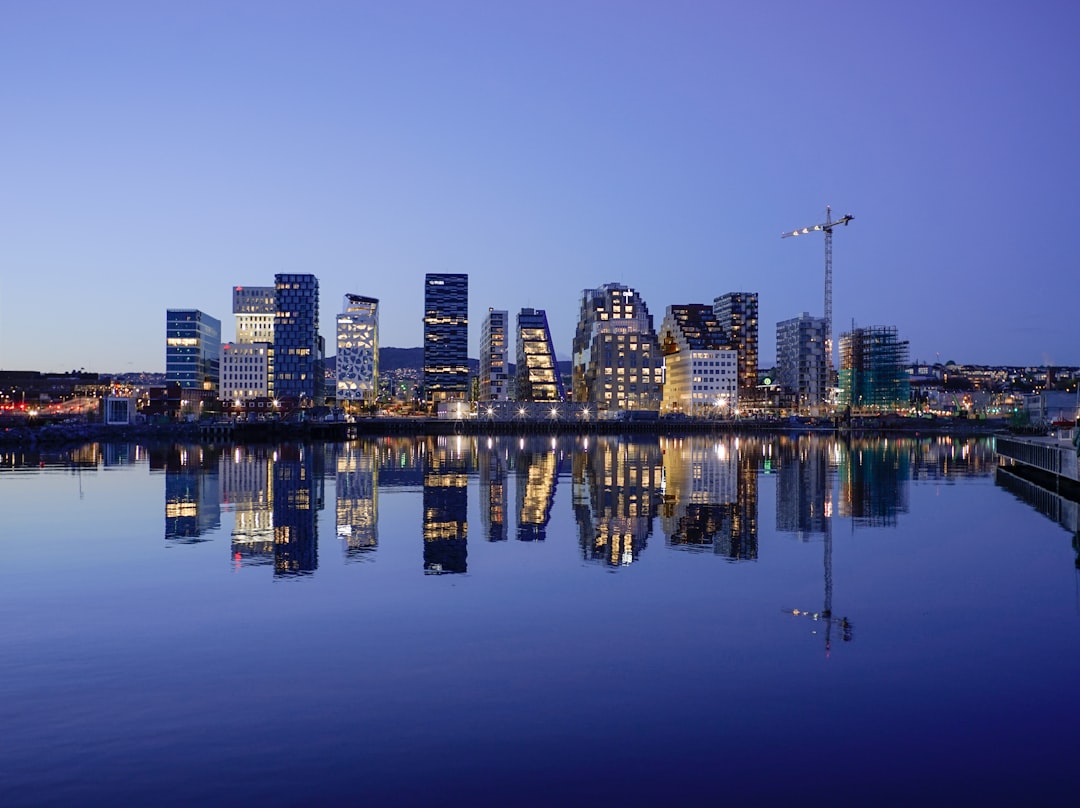Nordic Noir has emerged as a captivating genre that has taken the literary and cinematic world by storm. Originating from the Nordic countries, particularly Norway, Sweden, Denmark, Finland, and Iceland, this genre is characterised by its dark themes, complex characters, and a stark portrayal of societal issues. The term “Nordic Noir” encapsulates not only the chilling narratives that often revolve around crime and mystery but also the unique cultural and geographical elements that shape these stories.
As readers and viewers delve into the world of Nordic Noir, they are invited to explore the depths of human nature, morality, and the often grim realities of life in the Nordic region. The genre’s popularity has surged in recent years, with a growing number of international audiences drawn to its distinctive storytelling style. The atmospheric settings, intricate plots, and profound character development resonate with those seeking more than just surface-level entertainment.
As we embark on this exploration of Nordic Noir, we will uncover its origins in Norwegian literature, its defining characteristics, and the notable authors who have contributed to its rich tapestry. Furthermore, we will examine how the Norwegian landscape and culture influence these narratives, as well as the genre’s evolution in film and television. Schedule a one-on-one consultation with our relocation specialists to simplify your move to Norway. https://norwayrelocation.no/one-hour-strategy-session/
Summary
- Nordic Noir is a popular genre of crime fiction that originated in the Nordic countries, known for its dark and gritty storytelling.
- Norwegian literature played a significant role in the origins of Nordic Noir, with authors like Jo Nesbø and Karin Fossum contributing to its development.
- The characteristics of Nordic Noir include bleak and atmospheric settings, complex and flawed protagonists, and a focus on social issues and psychological depth.
- Notable Norwegian authors such as Jo Nesbø and Anne Holt have made significant contributions to Nordic Noir, creating compelling and intricate crime stories.
- The influence of Norwegian landscape and culture is evident in Nordic Noir, with its stark and haunting settings adding to the atmosphere of the genre.
The Origins of Nordic Noir in Norwegian Literature
The roots of Nordic Noir can be traced back to the rich literary traditions of Norway, where authors have long been fascinated by the darker aspects of human existence. The genre began to take shape in the late 20th century, with writers such as Jo Nesbø and Karin Fossum paving the way for a new wave of crime fiction that delved into the psychological complexities of their characters. These authors drew inspiration from classic Norwegian literature while infusing their works with contemporary themes that reflect societal concerns.
Norwegian literature has a long history of exploring existential themes, often influenced by the harsh realities of life in the region. The stark landscapes and long winters serve as a backdrop for stories that grapple with isolation, despair, and moral ambiguity. This literary tradition laid the groundwork for what would become known as Nordic Noir, where crime is not merely a plot device but a lens through which to examine broader social issues.
As readers engage with these narratives, they are invited to reflect on the human condition and the societal structures that shape our lives.
The Characteristics of Nordic Noir

At its core, Nordic Noir is defined by several key characteristics that set it apart from other crime fiction genres. One of the most prominent features is its emphasis on realism. Unlike traditional detective stories that often rely on sensationalism or romanticised portrayals of crime-solving, Nordic Noir presents a gritty and unvarnished view of criminality.
The narratives often unfold in a slow-burn fashion, allowing for deep character development and an exploration of the psychological motivations behind criminal behaviour. Another defining trait is the moral ambiguity that permeates these stories. Characters are rarely depicted as purely good or evil; instead, they exist in a grey area where their actions are influenced by their circumstances and past experiences.
This complexity adds depth to the narrative and challenges readers to grapple with their own moral beliefs. Additionally, Nordic Noir frequently incorporates social commentary, addressing issues such as inequality, corruption, and the impact of modernity on traditional values. This blend of crime fiction with sociopolitical themes creates a thought-provoking reading experience that lingers long after the final page is turned.
Notable Norwegian Authors and Their Contributions to Nordic Noir
Several Norwegian authors have made significant contributions to the Nordic Noir genre, each bringing their unique voice and perspective to the table. Jo Nesbø is perhaps one of the most well-known figures in contemporary crime fiction, with his Harry Hole series gaining international acclaim. Nesbø’s intricate plots and psychologically complex characters have captivated readers worldwide, establishing him as a leading figure in Nordic Noir literature.
Karin Fossum is another prominent author whose works delve into the darker aspects of human nature. Her novels often explore themes of guilt, loss, and redemption, offering readers a glimpse into the minds of both victims and perpetrators. Fossum’s ability to create tension while maintaining a deep sense of empathy for her characters sets her apart in the genre.
Other notable authors include Unni Lindell and Anne Holt, both of whom have contributed richly to the tapestry of Norwegian crime fiction.
The Influence of Norwegian Landscape and Culture on Nordic Noir
The Norwegian landscape plays an integral role in shaping the narratives within Nordic Noir. The dramatic fjords, dense forests, and long winters create an atmospheric backdrop that enhances the sense of isolation and foreboding often present in these stories. The natural environment becomes almost a character in itself, influencing the actions and emotions of the characters who inhabit it.
Culturally, Norway’s history and societal values also inform the themes explored in Nordic Noir. The country’s commitment to social welfare and equality contrasts sharply with the darker elements of crime depicted in these narratives. This juxtaposition serves to highlight societal flaws and provoke critical reflection on issues such as justice, morality, and human behaviour.
As readers immerse themselves in these stories, they gain insight into not only the complexities of crime but also the cultural fabric that shapes Norwegian society.
The Rise of Nordic Noir in Norwegian Film and Television

The transition of Nordic Noir from literature to film and television has been met with widespread acclaim, further solidifying its place in popular culture. Series such as “The Bridge” (Bron/Broen) and “Wallander” have garnered international attention for their gripping storytelling and high production values. These adaptations have brought Nordic Noir to a broader audience, showcasing the genre’s ability to translate effectively across different mediums.
Norwegian filmmakers have embraced the genre’s themes and aesthetics, creating visually stunning works that capture the essence of Nordic Noir. The use of natural landscapes as backdrops enhances the mood and atmosphere of these productions, while strong character development remains at the forefront. As viewers engage with these adaptations, they are drawn into a world where suspense intertwines with social commentary, making for compelling viewing experiences.
Exploring Themes of Crime, Corruption, and Social Issues in Norwegian Noir
At its heart, Nordic Noir serves as a vehicle for exploring complex themes related to crime and corruption within society. The narratives often delve into the motivations behind criminal behaviour, examining how societal pressures can lead individuals down dark paths. Issues such as drug abuse, domestic violence, and systemic corruption are prevalent throughout many works in this genre.
Moreover, Nordic Noir frequently addresses broader social issues that resonate with contemporary audiences. Themes such as immigration, gender inequality, and environmental concerns are woven into the fabric of these stories, prompting readers to reflect on their own societies. By tackling these pressing issues through the lens of crime fiction, authors create a space for dialogue and critical examination of societal norms.
The Appeal of Nordic Noir to International Audiences
The global appeal of Nordic Noir can be attributed to its unique blend of suspenseful storytelling and thought-provoking themes. International audiences are drawn to the genre’s ability to transcend cultural boundaries while still offering a distinctly Scandinavian perspective on crime and morality. The authenticity of characters and settings resonates with readers who appreciate nuanced portrayals over clichéd tropes.
Additionally, the atmospheric quality inherent in Nordic Noir captivates viewers seeking immersive experiences. The stark landscapes and haunting soundscapes create an emotional resonance that lingers long after consumption. As audiences engage with these narratives, they are not only entertained but also invited to reflect on their own values and beliefs regarding justice and morality.
The Evolution of Nordic Noir and its Impact on Norwegian Society
As Nordic Noir continues to evolve, it has left an indelible mark on Norwegian society itself. The genre has sparked conversations about crime prevention strategies and social justice initiatives within Norway. By shining a light on societal issues through compelling narratives, authors have encouraged readers to confront uncomfortable truths about their communities.
Moreover, the success of Nordic Noir has fostered a sense of national pride in Norway’s cultural contributions to global literature and film. As more authors emerge within this genre, there is a growing recognition of Norway as a significant player in contemporary crime fiction. This evolution not only enriches Norway’s literary landscape but also reinforces its position as a hub for innovative storytelling.
Criticisms and Controversies Surrounding Nordic Noir
Despite its popularity, Nordic Noir has not been without its criticisms and controversies. Some detractors argue that the genre can perpetuate negative stereotypes about Scandinavian societies by focusing excessively on crime and violence. This portrayal may overshadow Norway’s many positive attributes and contribute to misconceptions about life in the region.
Additionally, there are concerns regarding representation within Nordic Noir narratives. Critics have pointed out that many works predominantly feature white characters while neglecting diverse voices that could enrich the genre further. As discussions around inclusivity continue to evolve within literature and film, it remains essential for creators to address these concerns while maintaining authenticity in their storytelling.
Recommendations for Exploring Norwegian Nordic Noir Literature and Film
For those eager to delve into the world of Norwegian Nordic Noir literature and film, there are numerous recommendations worth exploring. Starting with Jo Nesbø’s Harry Hole series provides an excellent introduction to contemporary crime fiction that combines intricate plots with psychological depth. Karin Fossum’s works offer a more introspective approach to crime narratives while still delivering gripping suspense.
In terms of film and television adaptations, “The Bridge” stands out as a must-watch series that exemplifies the genre’s strengths in storytelling and character development. Additionally, “Headhunters” (Hodejegerne) is a thrilling film that showcases Norway’s ability to blend dark humour with suspenseful storytelling. As you embark on your journey through Norwegian Nordic Noir, consider enhancing your experience by learning the language through courses offered by institutions like NLS Norwegian Language School in Oslo.
Understanding the nuances of language can deepen your appreciation for these works while providing insights into cultural contexts that shape them. In conclusion, Nordic Noir represents a rich tapestry woven from threads of crime fiction, social commentary, and cultural exploration. Its origins in Norwegian literature have paved the way for a genre that continues to captivate audiences worldwide while prompting critical reflection on societal issues.
As we navigate this dark yet compelling landscape together—whether through literature or film—let us embrace both its complexities and its contributions to our understanding of humanity.
Register for a Norwegian class at the NLS Norwegian Language School now!

